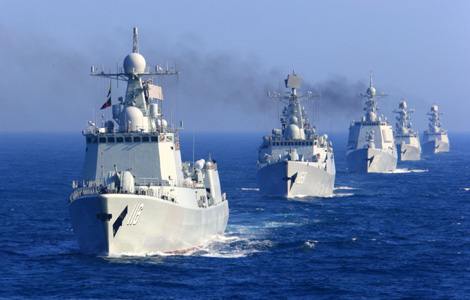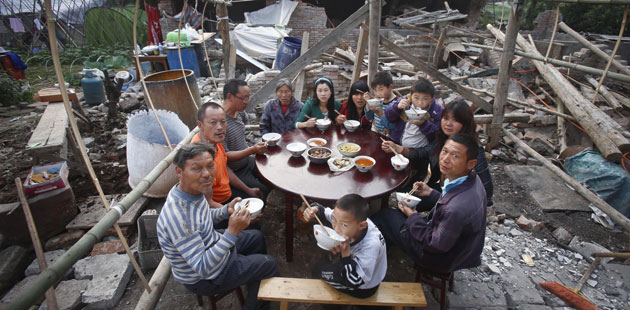A new phase in inter-regional ties
Updated: 2013-07-25 07:20
By Osvaldo Rosales (China Daily)
|
|||||||||||
The Second China-Latin America and the Caribbean Think Tanks Forum is being held five years after the start of the subprime crisis. The worst and longest since 1930s, the crisis has been largely concentrated in industrialized countries.
The eurozone will remain in recession in 2013 and its 2014 GDP will remain below its 2007 level. In 2014, Germany's GDP will exceed only 4 percent of its 2007 level, while that of the United States will be 8 percent more than what it was seven years ago. This dynamism pales in comparison to China's GDP, which in the same year will be 81 percent more than the 2007 figure. For the rest of the decade, industrialized economies will continue facing low growth and high unemployment, while developing economies' growth rate will double or be more than that of industrialized economies.
Three major trends characterize the international economic scenario. First, is the increasing importance developing countries, particularly in Asia, have in the global economy - a phenomenon associated with the close ties China has been developing with Asian, African and Latin American economies. The second trend is the evolving geographical fragmentation of production around global or regional value chains. And third is the advancement toward powerful trade negotiation processes ("mega-deals") that could have a considerable impact on the ways developing countries continue to integrate into the world economy.
This is the case with the Trans-Pacific Partnership and the negotiations between the US and the European Union to establish a free trade area in goods, services and investments. The underlying motive behind these "mega-deals" between/among developed countries is to win back the competitiveness lost to Asian value chains and seek to balance or penetrate them by promoting these chains' most sophisticated segments and technological contents.
In turn, these could be protected by erecting barriers which through strong intellectual property measures limit the access to new knowledge and technologies. What is more, this kind of "mega-deals" also make it mandatory to adhere to strict disciplines and performance of public enterprises, public procurement and convergence of regulatory frameworks, favoring the interests of higher value-added segments in value chains.
Hence, this could potentially lead to renegotiation of international rules on trade outside the World Trade Organization with minimal involvement of developing countries. In this scenario, Latin America faces the risk of trade and investment diversion into economies that are embedded in these agreements and have more productive and technological capacity. These "mega-deals" could establish compliance standards as well, which the region's exporters would find difficult to meet. Some such standards are environmental, traceability and carbon footprint standards, and those related to intellectual property rights, which would hinder mass access to the Internet and its use for educational purposes and promoting innovation.
Another risk lies in the chasms that could develop among developing regions, between countries that are party to the negotiations and those that are not. Thus, ASEAN and Latin American economies should think twice before rendering to temptation. Excessive differences of regulations in trade and investment, state-owned enterprises and intellectual property would make it more difficult for them to advance in their integration pursuits.
Integration between Asia and Latin America should move at a quicker pace so that they support the internationalization of their businesses and build competitive value chains to effectively promote South-South trade in accordance with the increasing importance both regions have in the world economy.
Today, global economic growth basically depends on developing countries. And the economic growth of developing countries depends more on China now than on the G7.
This is then the context for addressing the new phase of the Chinese and Latin American and the Caribbean relationship. The agenda is broad enough. At the global level, it comprises financial regulation and international monetary system reforms, climate change, trade negotiations at the WTO and South-South cooperation mechanisms for preventing financial crises. At the level of China's relationship with Latin America, the challenges are accurately contemplated in the cooperation agenda the Chinese government proposed at our UN Economic Commission for Latin America and the Caribbean headquarters in Santiago, Chile. The agenda includes diversification of trade, investment in infrastructure, joint business ventures and access to new technologies.
The link between China and Latin America could help update Latin American regional integration, modernize infrastructure and support a more diversified intra-regional trade, one which includes more value-added content and more participation from small and medium-sized enterprises. For this to materialize, Latin America and the Caribbean need to strengthen their integration and agree upon a regional dialogue and cooperation strategy with China and the Asia Pacific.
The author is director of the International Trade and Integration Division at the United Nations Economic Commission for Latin America and the Caribbean.
(China Daily 07/25/2013 page9)
Today's Top News
Snowden's hopes of leaving airport dashed
Substandard chargers for phones may prove deadly
Major advance to halt flow of 'gutter oil'
Beijing weighs individual care
Death toll in Spain train crash rises to 56
China issues trade facilitation measures
Li points way for railways reform
Fewer Chinese consumers picking Apple's iPhone
Hot Topics
Lunar probe , China growth forecasts, Emission rules get tougher, China seen through 'colored lens', International board,
Editor's Picks

|

|

|

|

|

|





